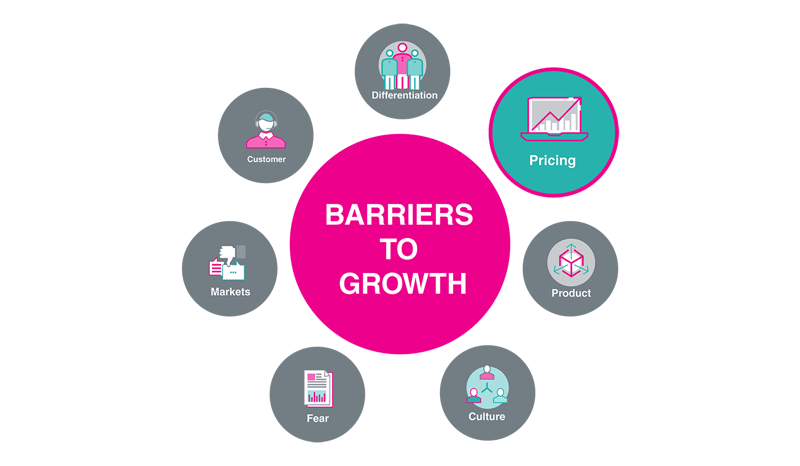If your company doesn’t make a profit, it won’t survive, finance people call this ROI – Return on Investment. Marketing ROI, on the other hand, is a little harder to quantify. While it’s easy to pour over financial statements and see pretty quickly how healthy your business bank account looks, it’s not always as easy to see what your marketing spend is doing for you.
Marketing consultants frequently trade on their industry’s reputation as being something of a Dark Art. They love to baffle us with “vanity stats” – such as how many “likes” a Facebook post has, or how many influential people follow you on Instagram. All of which may sound pretty good, but does any of it translate into actual sales? A Facebook “like” doesn’t put a single Rand into your business’ bank account. And do any of your Instagram followers actually buy your product or service?
Marketing spend can only truly be justified and measured by how it impacts your bottom line. This requires meticulous, continuous monitoring and analysing. What’s working and what isn’t? And why? Which channels generate leads, and which are marketing black holes? In other words, what is your marketing ROI, and how can you improve it?
These are two questions we plan to answer right now. In this guide, our proven part-time Marketing Directors define marketing ROI, and explain how they measure it. You’ll then be able to use this new knowledge and understanding to choose the right metrics to measure in your own business. These metrics will help you build a marketing dashboard that accurately tracks how much you spend on – and make from – your marketing efforts. From there, it will be easy to see how you can improve your marketing ROI and, by default, your business’ overall performance.
Marketing ROI – The Marketing Centre Definition
At The Marketing Centre, we like to reverse engineer the definition of ROI – starting with the “R” and working back to the “I.” Basically, businesses invest in marketing activities to convert interested prospects into paying customers (that’s the return). But it’s not just about getting one customer to buy once. We need to look at the potential lifetime value of that customer, and ask ourselves, “How much is it worth spending to win and keep them?”
Let’s look at an example: A five-year contract with a client, worth R2m a year, translates to a customer lifetime value of R10m. So, if it costs you R1m to win that client, that’s actually a good investment, as it will end up giving you R10 back for every R1 spent by the time the contract is over. However, what happens if the contract is only for one year, and worth R2m? Suddenly, spending half that to win the customer is not a good investment. The “R” isn’t worth the “I.”
Of course, it’s not always easy to trace customers back to a single marketing activity. This is why it’s important for businesses to use a wider-ranging set of measuring tools. We call this a marketing dashboard.
A marketing dashboard helps you clearly establish your marketing ROI by asking the questions you to need to answer. Questions such as:
- How many leads does it take to generate one sale?
- How many contacts do each of your marketing activities generate?
- How much does it all cost?
That’s your “I” – the total sales and marketing spend needed to acquire each customer. An effective marketing director refers to this as the CPA (cost per acquisition). Your CPA is the very cornerstone of your marketing plan and it should determine every marketing decision your business makes.
Common Challenges Of Calculating Marketing ROI
As you may have gathered by now, marketing ROI is a slippery beast, and there are many challenges marketing professionals face when calculating it. Here are few of the more common ones:
Estimating The Full Investment
Marketing spend is not just what you spend on actual marketing! It also includes the salaries of all staff involved – including the cost of any outsourced expertise – as well as materials and operations.
Knowing What “Good” Marketing Looks Like
Although marketing dashboards are incredibly useful, not all of the massive amounts of data they generate is relevant. Impressions, for example, are meaningless if no one who sees or likes your campaign actually buys from you. Distributing thousands of brochures and other marketing material is useless if the people who receive them throw them straight into their recycling piles.
What IS important is this: How much impact your marketing has on the development of a new customer relationship.
A next level marketing director will intimately understand this process and will embed all their decisions into an overall marketing strategy, taking the time to get it right instead of dashing out an exciting plan to dominate the hashtags in two days flat.
A well-thought out strategy does three things:
- Works from the baseline of your business’ current positioning.
- Establishes goals.
- Constructs a strategy that shows how to get from one to the other.
First Touch Or Last Touch?
When it comes to determining what really makes conversions happen, there are two prevailing points of view:
First touch attribution believes the first contact customers have with your brand is the most important, as that’s what starts their journey to conversion. The problem with this is, it doesn’t take into account any awareness of your product the customer may have had before they made contact with your current campaign.
Last touch attribution believes the last channel through which a lead passes is the one that matters the most, because that’s the one that pushed them over the proverbial edge. Where this line of thinking falls short, however, is that it’s impossible to know what was going through that customer’s mind just before they took that final action. How much of their decision was based on their own thoughts, and how much was because of your marketing efforts?
You Can’t Measure Everything
Marketing is a cumulative activity. How effective it is relies hugely on the way the different elements of your campaign interplay in the minds of your prospects. This makes it, at best, difficult to measure directly. Even a qualitative survey only collects what customersthink they’re thinking, and even this won’t be apparent from raw cost-per-acquisition figures.
Measuring Marketing ROI
Marketing may not be an exact science, but its more about calculation than you may previously have thought. It’s all about knowing the risks – as much as you can, anyway – and weighing these against predictable returns. It’s about linking input with output, investment with return.
Although there is an almost endless array of metrics available, each one offering to help inform these calculations, we think you’ll find these three particularly valuable when it comes to working out your marketing ROI and extracting maximum value from your marketing spend.
That’s the bottom line about your bottom line.
At The Marketing Centre, we have a large team of highly skilled, part-time proven Marketing Directors ready to share their abundance of diverse know-how with you.
Give your growing business the expertise it deserves. Contact us today.




